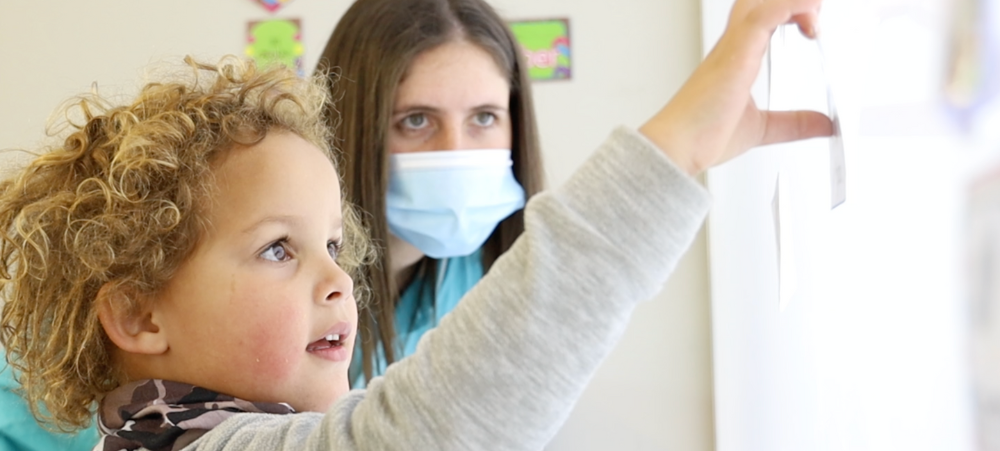
How To Encourage Your Baby’s Mobility
When we talk about your baby’s mobility, what ideas come to your mind? Things like, rolling, crawling, walking, etc. All of these things involve the large or gross muscles in the body & so to encourage mobility, we do exercises that strengthen your baby’s body from quite an early age. Now, it’s a bit like doing some strength training at gym – on the first visit, you’re not going to go for the heaviest weights, otherwise, you can cause some injury. You’re fist going to do the basics first & build on top of that. It’s the same with your baby. We’re going to talk about each stage & what’s appropriate for each stage. The reason why I will talk about stages & give approximate ages is for 2 reasons: Premature babies’ chronological age (i.e. number of weeks & months of age) is different to their developmental age, because they had less time to develop physically in the womb. Each child is different in terms of their development & this is still healthy. Control over the body From birth onwards, your baby will develop physically by first learning to control his / her head, slowly growing stronger down the trunk of the body & the legs. That’s why you’ll see that your baby will first learn to control his / her arms & only later his / her legs. Babies also gain control of their bodies from the centre outwards, which is why your baby will first learn to bat or try to swipe a toy & only later discover that he / she can move & control his / her fingers independently. Here, we do exercises to strengthen baby’s neck, shoulder & back muscles, for example, lying baby on his / her tummy. Often babies do not enjoy the experience when you first start placing them on their tummies, but with practice & stronger neck & shoulder muscles, they will enjoy the tummy time. When you do place baby on his / her tummy to begin with, you can roll a small blanket & place it under baby’s chest, but with his / her arms in front of it, so that your baby is not completely flat on his / her tummy. Remember: Not to place baby on his / her tummy just after a feed, because the pressure on the tummy could cause the milk to reflux out Only to place baby on his / her tummy when she / he is happy Even a minute or two to begin with will help to build his / her muscles & you can gradually increase the time as your baby’s muscles become stronger We do quite a few different tummy exercises in my workshop, but one example for a nearly 4 month old baby is: For mom to lie on her back & hold her baby so that baby & mom’s tummies are touching Mom asks “Where’s my baby?” & lifts baby’s face to her face and says “There you are!” Repeat Mom asks “where’s my baby?” & lifts baby up high above her face & says “Up high, high, high!” This also helps stimulate your baby’s vestibular system – so he / she can feel movement & his / her body’s position in space & it gives moms a good work out for tummy muscles too! Learning to roll As your baby becomes stronger & stronger at moving & controlling his head, he / she will start to turn his / her head around to see interesting things & his / her legs will start to follow the head. This ability to twist at the waist is important in order to learn how to roll, sit & crawl. Between the age of 4 & 6 months, your baby will start to roll from tummy onto his / her back & also from back on to tummy. An exercise that I do in my workshop to encourage rolling is to: Hold both of your baby’s hands together in one hand & both baby’s feet together in your other hand. Gently rock your baby from side to side Can later just hold the feet together & gently roll your baby over Learning to sit At around the age of 6 months, your baby will learn to sit. They key to sitting is for your baby to learn how to balance his / her body & your baby will have a few crash dives before he / she masters balancing for sitting. So it’s important to make sure that your baby is well supported by things like cushions & is under supervision preferably on a softer surface e.g. a soft carpet / rug vs a hard, tiled floor. Some ways to support your baby while learning to sit are: Put your baby in the Tailor pose – feet together & knees open & carrying his / her weight on her hands You can place pillows all around your baby or you can sit with your baby between your bent legs either facing you or facing away from you Again there are many different exercises that we do in my workshops to encourage balance. One really fun one that we do for 5 month old babies & which even older toddlers will love is using a towel. Here we simply place baby on his / her tummy on a towel & drag the towel around the room. It’s important that your baby faces you, because he / she may feel a little anxious about this game the first time & will look for the expression on your face for reassurance. Learning to Crawl If your baby has spent lots of time on his / her tummy, once he / she has learnt how to sit, he / she will first learn to pull themselves forward from the sitting position to all fours. Once comfortable on all fours, your baby may start rocking on all fours and later crawling backwards. Soon thereafter


































